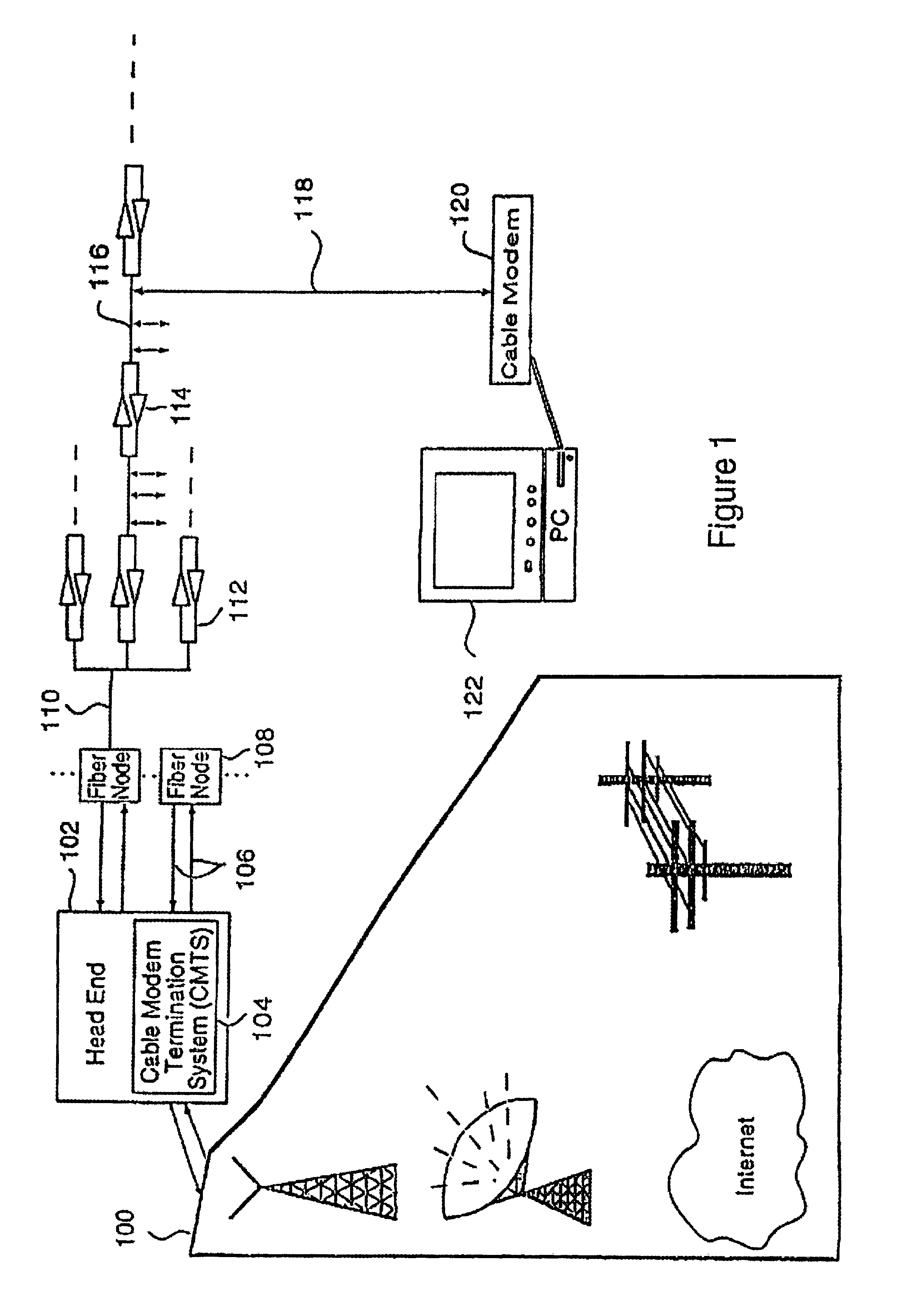Technique for synchronizing multiple access controllers at the head end of an access network
a technology of access controller and access controller, which is applied in the field of digital computer network technology, can solve the problems of not being the most advantageous configuration for handling new and emerging broadband network applications such as video-on-demand and telephony, and not easy to provide reliable high-quality voice/video communication over such networks
- Summary
- Abstract
- Description
- Claims
- Application Information
AI Technical Summary
Benefits of technology
Problems solved by technology
Method used
Image
Examples
Embodiment Construction
[0028]“FIG. 2 shows a block diagram of a conventional configuration for a cable network 200. As shown in FIG. 2, the CMTS 210 may include a plurality of physically distinct line cards, e.g. line card A 202 and line card B 204. Each line card provides a separate interface for communicating with a specific group of cable modems in the network. For example, line card A 202 includes a distinct group of ports (e.g., 205, 212) for communicating with cable modem Group A 260a, and line card B includes a separate distinct group of ports (e.g., 225, 222) for communicating with cable modem Group B 260b.
[0029]Each line card within CMTS 210 includes a separate MAC controller for controlling the group of ports which reside on that physical line card. For example, on line card A, MAC controller 206 controls downstream transmitter 212 and the plurality of upstream receivers 205. Similarly, the MAC controller 208 on line card B controls downstream transmitter 222 and the plurality of upstream recei...
PUM
 Login to View More
Login to View More Abstract
Description
Claims
Application Information
 Login to View More
Login to View More - R&D
- Intellectual Property
- Life Sciences
- Materials
- Tech Scout
- Unparalleled Data Quality
- Higher Quality Content
- 60% Fewer Hallucinations
Browse by: Latest US Patents, China's latest patents, Technical Efficacy Thesaurus, Application Domain, Technology Topic, Popular Technical Reports.
© 2025 PatSnap. All rights reserved.Legal|Privacy policy|Modern Slavery Act Transparency Statement|Sitemap|About US| Contact US: help@patsnap.com



